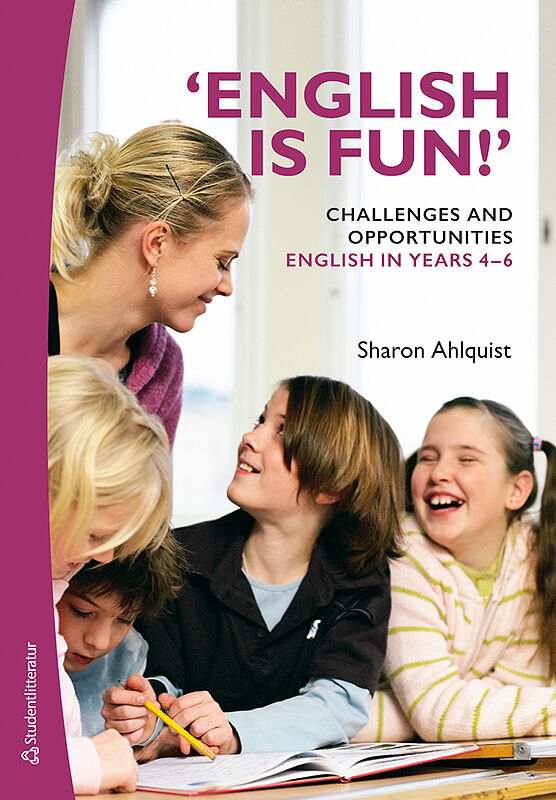Varukorg
Varukorgen inkl. moms 0 kr
Elektronisk distribution
Frakt inkl. moms 0 kr
Varav moms (6 %) 0 kr
Varav moms (25 %) 0 kr
Öresutjämning 0 kr
Att betala inkl. moms 0 kr

'English is fun!' Challenges and opportunities
1. English at School 11
Teaching English to young learners 12
The Young Learner 15
What do we know about child learners? 15
What is the role of the pupils’ first language in the language classroom? 16
How can we help all our pupils to learn English? 20
What are the influences on second language development in the young learner classroom? 23
What can we say about the teacher, materials, and methods? 25
What is so special about school years 4 to 6? 27
The national curriculum, Lgr11 30
2. Structuring a Lesson 33
What are the different parts of a lesson? 33
What is the role of warm ups? 35
Warm Up 1: Alphabetical Order 36
Warm up 2: 10 Questions 39
Warm up 3: Flags 41
How can the teacher use English to create ‘space for learning’? 45
Language as a tool 49
3. Speaking and Listening 53
Creating a meaningful context 54
Task 1: The Oscars 55
Task 2: The Kingdom of Water 63
Order of presentation 69
Focus on pronunciation 70
Exercise 1: Minimal Pairs 73
Exercise 2: Four Corners 74
Exercise 3: Mark the Stress 74
Exercise 4: The Odd-One-Out 75
Exercise 5: The Phonetic Walk 76
4. Working with the information gap 77
Creating a need to use the language 78
Information Gap 1: One describes, one draws 81
Information Gap 2: Halves of a crossword 85
Information Gap 3: Jigsaw 88
A multimodal approach to jigsaw 91
Information Gap 4: The Blurb 93
5. Reading and Writing 99
Developing reading strategies 100
Using texts in the course book 106
Shorter texts 106
Longer texts 109
Writing: controlled, guided, free 110
The Titanic 111
A Day at the Beach 115
Some final thoughts 119
6. Grammar and Vocabulary 121
Focus on meaning, focus on form 121
Grammar teaching and young learners 122
Grammar teaching and Lgr11 125
Ways of teaching grammar 125
Grammar in context 129
Words as a stepping stone to grammar 135
7. A Communicative Perspective on Teaching English 145
Revisiting Behaviourism 146
Developing communicative competence 151
Communicative teaching approaches 153
Theories of second language learning 155
The Art Gallery 158
8. Assessing language development 169
Characteristics of a good task 169
The painting: assessment for learning in the spoken language 172
The painting: assessment for learning in the written language 180
9. Planning lessons based on a textbook 187
Working towards an all-round communicative competence 188
Lesson one 189
Lesson two 193
Lesson three 194
Lesson four 197
Discussion of our lesson planning 201
Scaffolding 202
Translanguaging 203
Challenging everyone 205
Products for assessment 206
10. Creating a Storyline 211
The Storyline Approach 212
Our Street: A story about neighbours 213
Key Question 1: Who are you? 214
Key Question 2: Where do you live? 217
Key Question 3: Who are our new neighbours? 218
Key Question 4: What can we do to help our new neighbours? 221
Connecting practice to theory 224
Conclusion 231
References 235
Information
- Författare:
- Sharon Ahlquist
- Språk:
- Engelska
- ISBN:
- 9789144121574
- Utgivningsår:
- 2019
- Artikelnummer:
- 39734-01
- Upplaga:
- Första
- Sidantal:
- 240